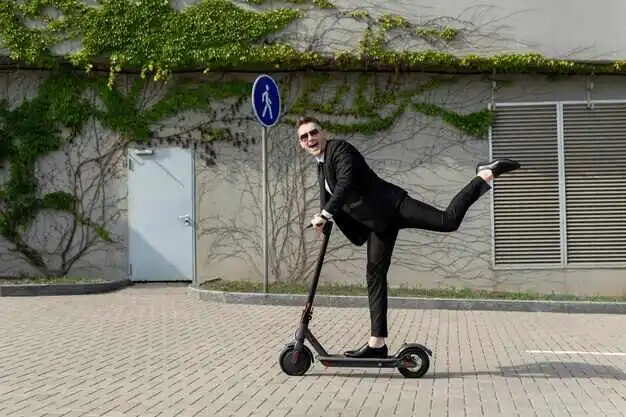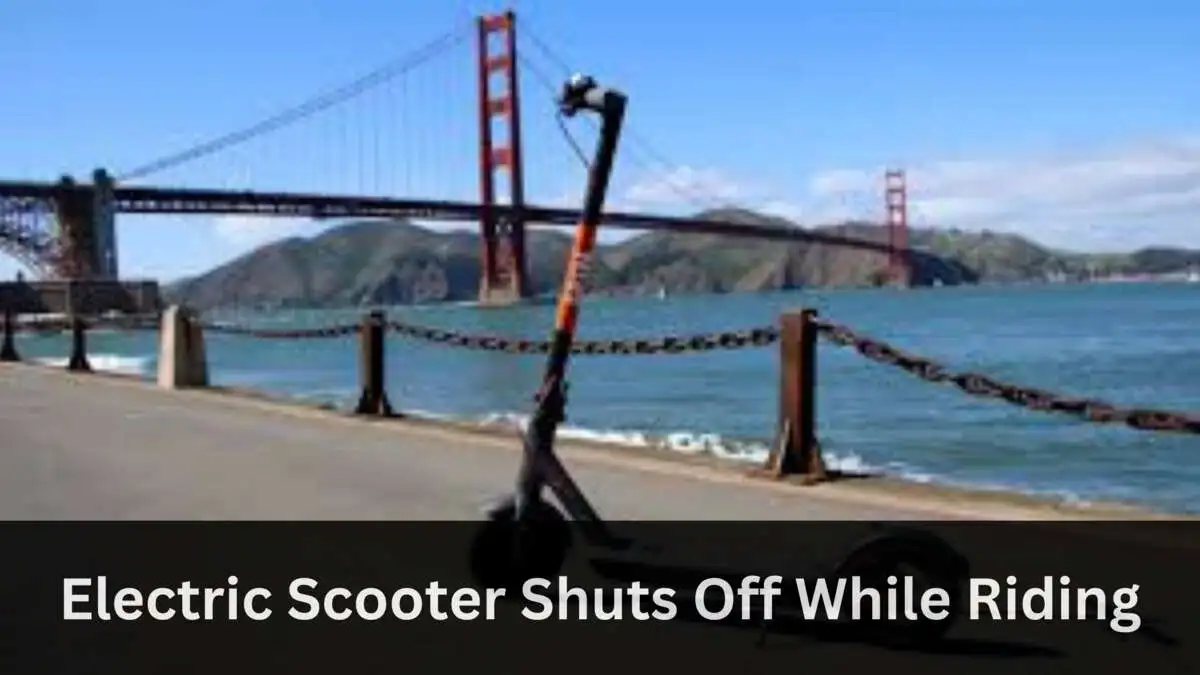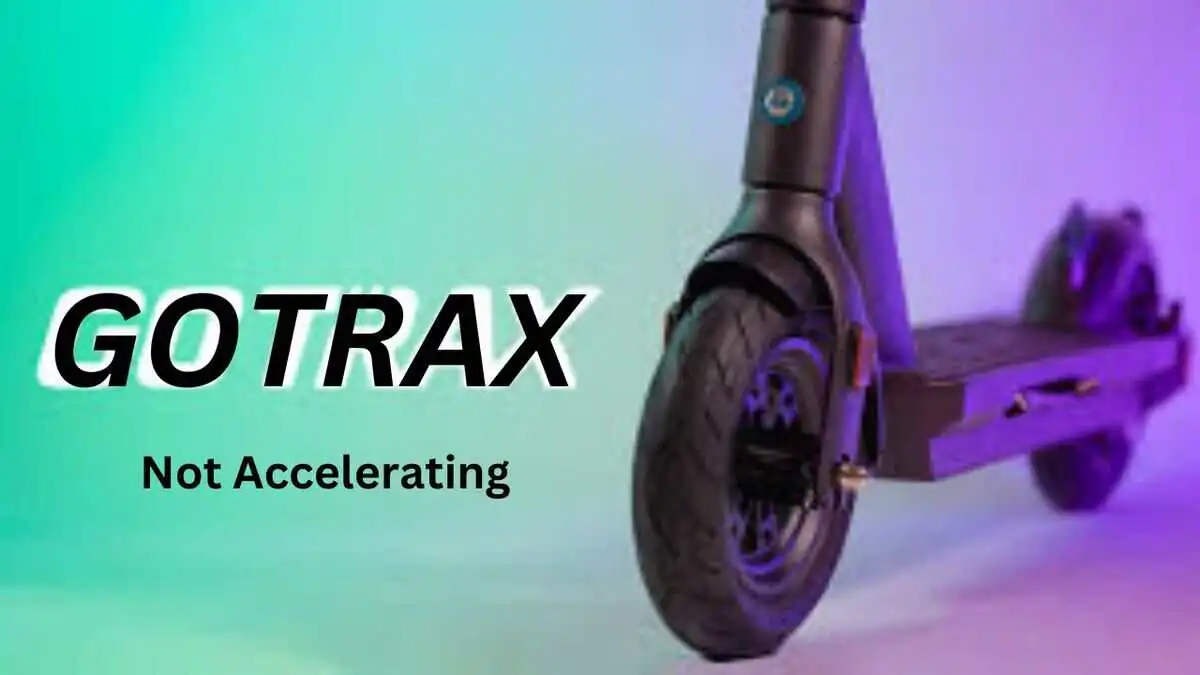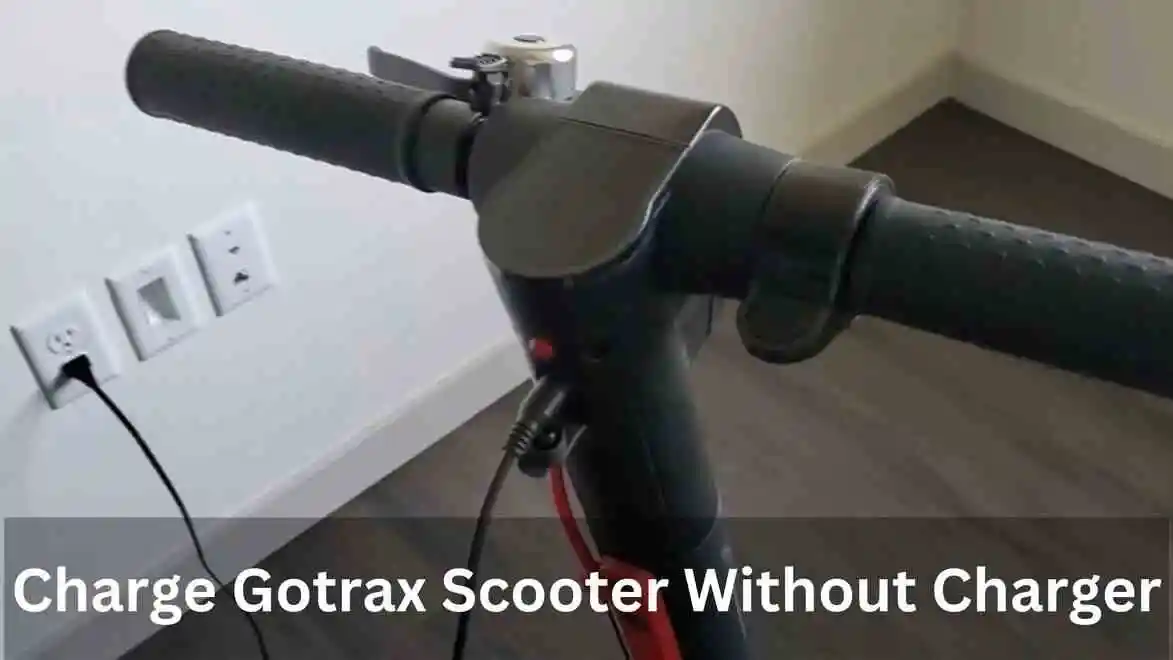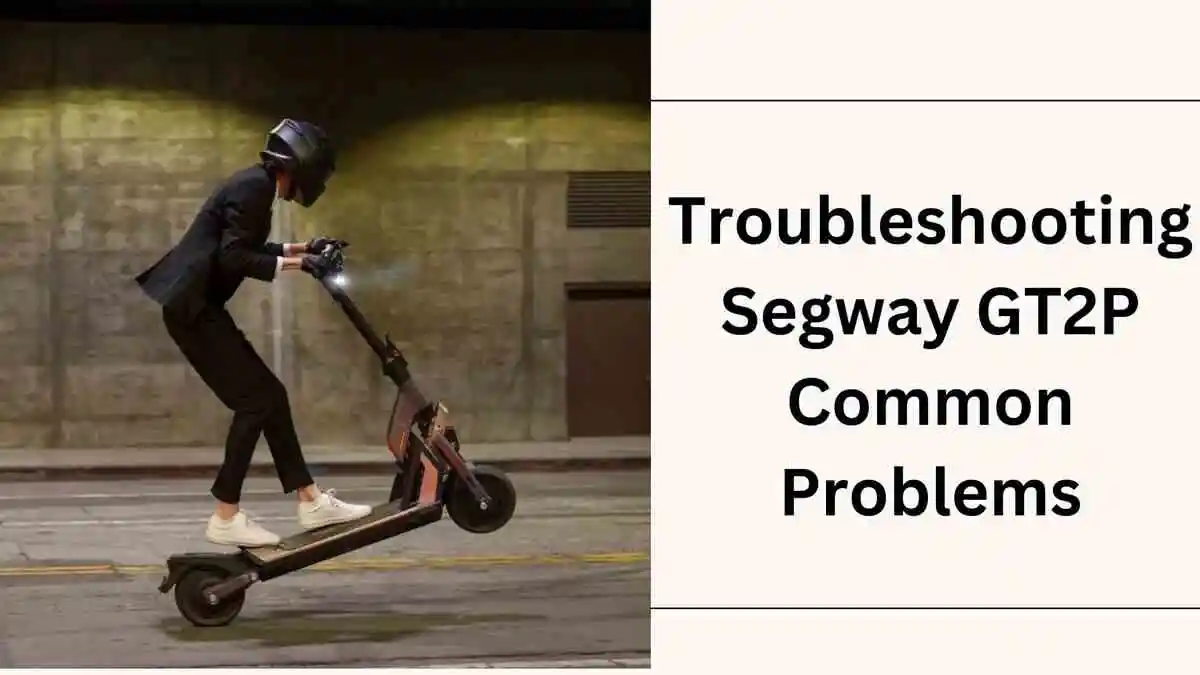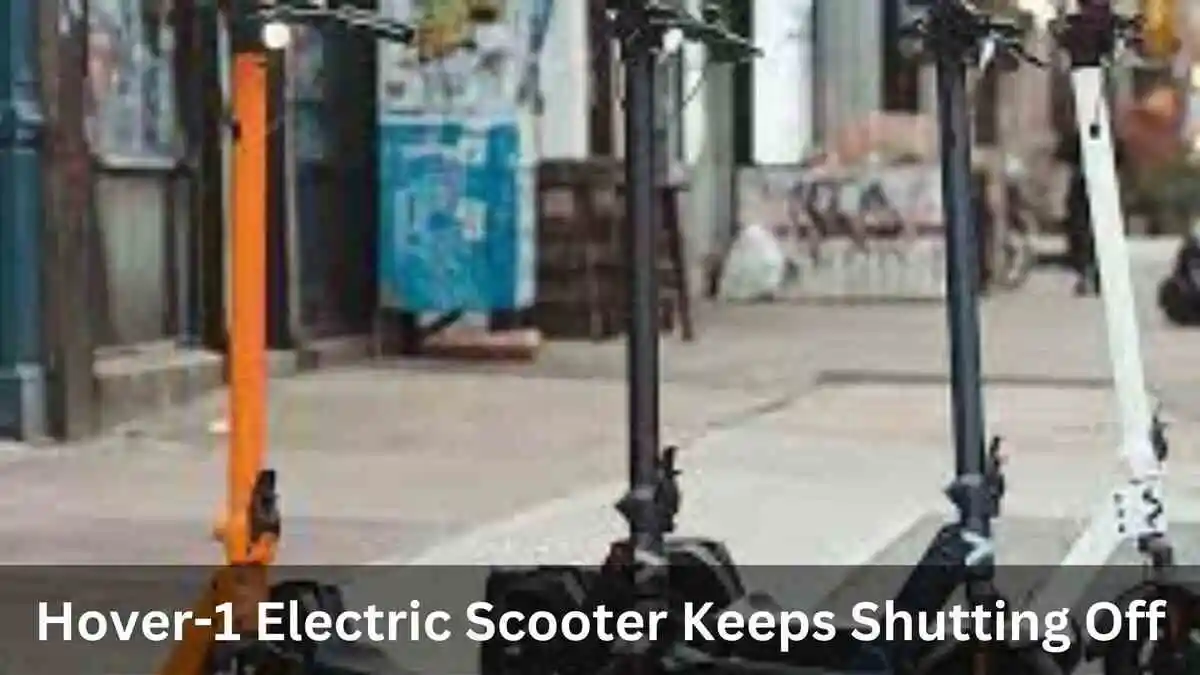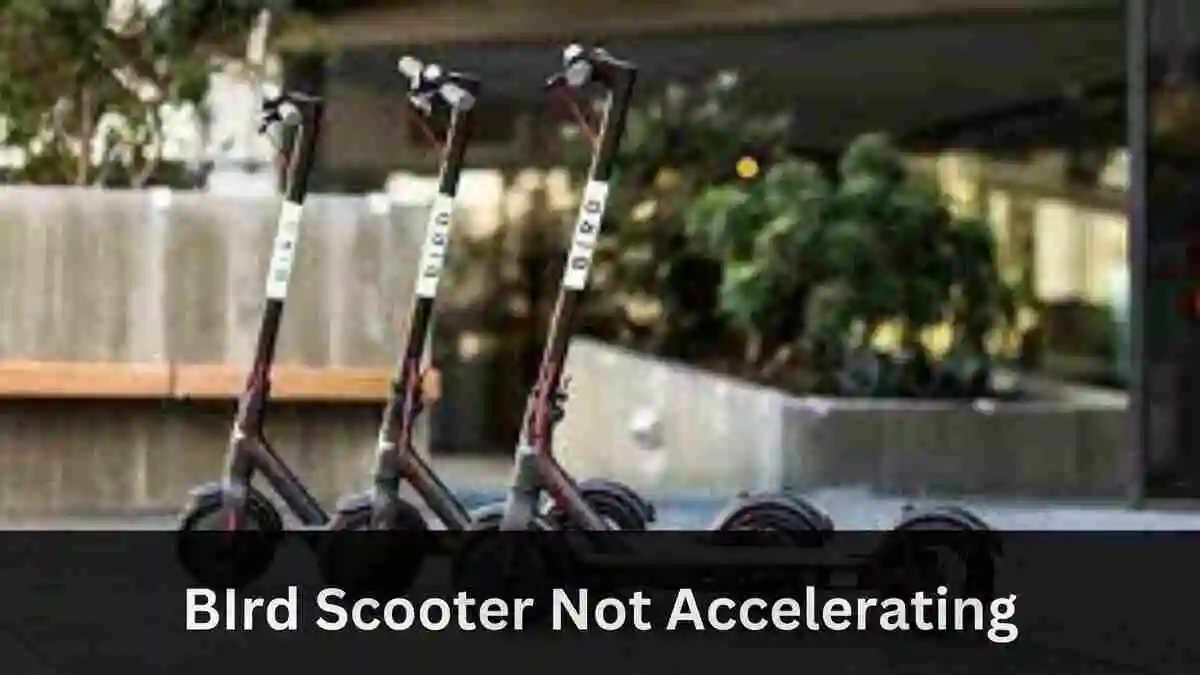Embarking on thrilling rides with the Segway Ninebot ZING E10 electric scooter can be an exhilarating experience, but like any electronic device, occasional hiccups may arise. Whether you’re a seasoned rider or a newcomer to the world of electric scooters, encountering technical issues can be frustrating. Fear not, as this segway ninebot zing e10 troubleshooting to be your go-to resource for addressing common problems that may arise with the Segway Ninebot ZING E10.
We will see many segway ninebot zing e10 problems, from connectivity issues to battery concerns, we’ve got you covered, providing step-by-step solutions to ensure your ZING E10 rides smoothly and keeps the excitement alive. Let’s dive into the world of troubleshooting and get your Segway Ninebot ZING E10 back on the road in no time!
First Thing To Know:
Brand New, Causing Problem: If you recently bought an electric scooter and are encountering any problems related to the manufacturer, it’s advisable to reach out to your seller. You can request a refund or replacement. If the refund period has ended, you might want to consider filing a warranty claim.
Longevity: In case of Ninebot ZING E10, average lifespan is around 11 months. Opting for warranty repairs during this period could extend your scooter’s functionality for at least an additional 1 months-but you might have to weight for 2 weeks at least until your scooter is fully fixed-Getting you closer to the warranty end date. This is how these tech devices are designed to keep companies running.
Hence, if you’ve been using your scooter for 11 months, it’s a good time to explore a new budget-friendly electric scooter. Whether you prefer a lightweight option or one with larger wheels, considering an upgrade is worth it if the solutions mentioned earlier don’t resolve your issues.
Note: Another challenge users face is storing electric scooters in apartments. If you’re interested, you can read about methods for storing electric scooters in apartments. Additionally, electric scooter issues in cities are also a concern.
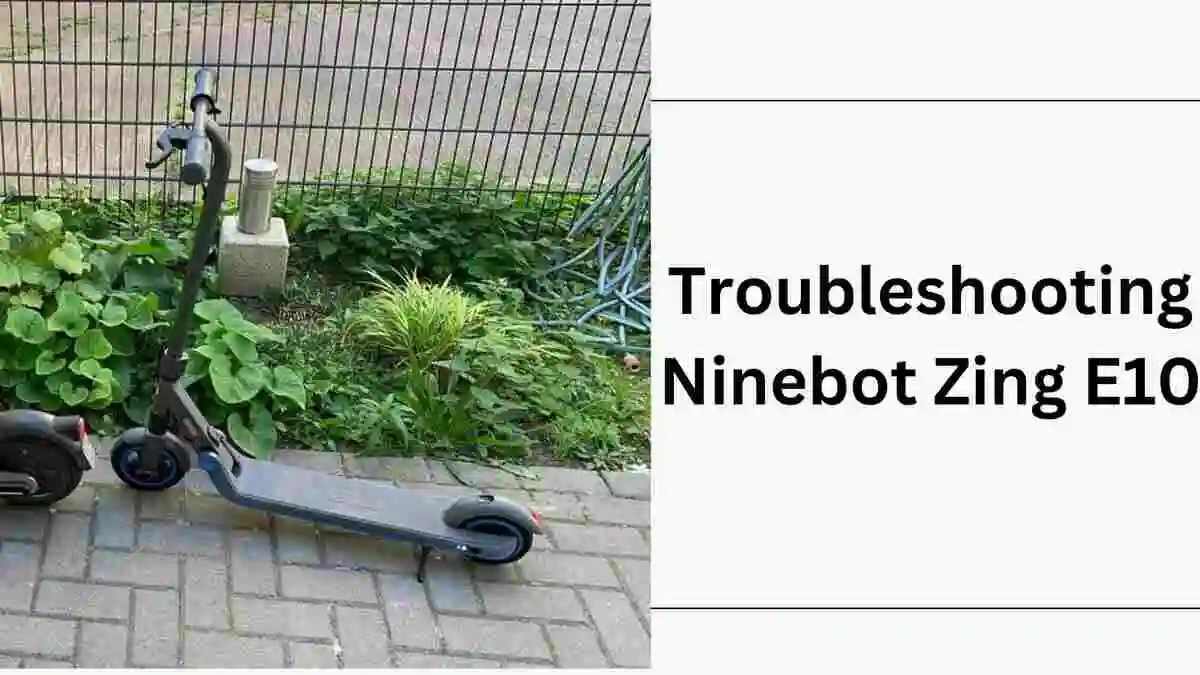
Segway Ninebot ZING E10 Problems (24 Fixed)
Here are fixes for segway ninebot zing e10 not working.
1. Scooter Not Turning On
If the egway ninebot zing e10 not turning on, it could be due to a drained battery, faulty power switch, or damaged electrical components.
Note: The below mentioned steps are just general and coomon steps for fixing scooter not turning on problem, you can click here to read a detailed article to fix not turning on issue.
Troubleshooting:
- Ensure the battery is adequately charged by connecting the charger to the scooter’s charging port and a power outlet.
- Inspect the power switch for any physical damage or debris and clean it if necessary.
- Check the electrical connections for any loose or damaged wires and secure or replace them if needed.
- Try turning on the scooter after charging and inspecting the power switch and connections.
- If the scooter still does not turn on, contact Segway customer support for further assistance or potential repairs.
2. Uneven Brake Performance:
If you observe uneven brake performance in your egway ninebot zing e10, where one brake doesn’t engage properly, the cause may be brake misalignment or wear.
Troubleshooting Steps:
- Examine the brake components for any visible signs of damage or wear.
- If you identify problems, contemplate replacing the brake pads or any other worn brake components.
- In cases of brake misalignment, follow the manufacturer’s guidelines to adjust them, ensuring uniform brake performance.
- After making adjustments or replacements, test the brakes in a safe area to verify that they are functioning correctly.
3. Scooter Producing Strange Sounds:
Unusual noises emanating from the Segway Ninebot ZING E10 can result from various factors, including loose components or debris in the wheels.
Troubleshooting Steps:
- Inspect the scooter for any loose components like handlebars or fenders and tighten them if necessary.
- Check the wheels and fenders for any debris or foreign objects and remove them if detected.
- If the noise persists, conduct a comprehensive inspection of the scooter to pinpoint the source of the sound.
- For specific guidance on addressing noise-related issues, refer to the user manual or contact Segway customer support for assistance.
4. Scooter Losing Speed:
The Segway Ninebot ZING E10 might encounter a decrease in speed, influenced by factors such as low battery, riding conditions, or software settings.
Related: Electric scooter turn off while riding.
Troubleshooting Steps:
- Check the battery level and ensure it’s sufficiently charged for optimal performance.
- Confirm that you are riding on a smooth, flat surface, as uneven terrain or inclines can impact the scooter’s speed. So always use electric scooter that can climb hills.
- Ensure the scooter is not in any energy-saving or restricted speed mode. Adjust the settings to attain the desired speed.
- If the problem persists, initiate a system reset by turning the scooter off and then back on again.
5. Handlebar Shaking or Vibrating While Riding:
If you experience handlebar shaking or vibrating during your ride on the Segway Ninebot ZING E10, it may result from an unbalanced load, misaligned wheels, or loose handlebar components.
Troubleshooting Steps:
- Ensure that the weight on the scooter is evenly distributed to avoid imbalances.
- Check the wheels for any indications of misalignment or damage, and make adjustments or replace them if needed.
- Tighten all handlebar components, including the stem, grips, and folding mechanism, to eliminate any loose connections.
- If the problem persists, consider examining the scooter’s suspension system for any abnormalities.
- If the issue continues to persist, or for further assistance, reach out to Segway customer support.
6. Scooter Experiencing Sudden Power Loss:
If your Segway Ninebot ZING E10 is unexpectedly losing power, it could be due to a drained battery, faulty power connection, or motor overheating.
Troubleshooting Steps:
- Check the battery level and recharge the scooter if the battery is running low.
- Inspect the power connections for any damage or loose connections, and secure them properly.
- Allow the scooter to cool down if it has been used extensively and may be overheated.
- Consider reducing the load on the scooter, as carrying heavy items can drain the battery faster and lead to power loss.
- If the problem persists, reach out to Segway customer support for further assistance.
7. Unresponsive Throttle:
If your Segway Ninebot ZING E10 is exhibiting an unresponsive throttle, it may be due to a malfunctioning throttle mechanism, loose wiring, or a software glitch.
Related: E-Scooter is o but not moving
Troubleshooting Steps:
- Inspect the throttle mechanism for any physical damage or debris; clean it if necessary.
- Check the wiring connections related to the throttle and ensure they are securely connected.
- If the scooter has a cruise mode, toggle it on and off to see if the throttle responsiveness improves.
- Perform a system reset and recalibrate the throttle according to the manufacturer’s instructions.
- If the throttle remains unresponsive, contact Segway customer support for further assistance or potential repairs.
8. Uneven Tire Wear:
Uneven tire wear on your Segway Ninebot ZING E10 may result from improper inflation, misaligned wheels, or riding on rough surfaces.
Troubleshooting Steps:
- Regularly check and maintain the tire pressure as recommended by the manufacturer.
- Inspect the wheels for any misalignment and adjust them accordingly.
- Avoid riding on rough or abrasive surfaces that can cause excessive wear on the tires.
- Periodically rotate the tires to promote even wear across all wheels.
- If the uneven tire wear persists, consider replacing the tires with new ones.
9. Scooter Jerking or Stuttering During Riding
Jerking or stuttering while riding your Segway Ninebot ZING E10 may stem from motor issues, battery problems, or throttle malfunctions.
Troubleshooting Steps:
- Check the battery level and ensure it’s adequately charged for smooth performance.
- Inspect the motor for any signs of damage or overheating, and allow it to cool down if necessary.
- Ensure the throttle is functioning correctly and recalibrate it if needed.
- Check for any loose connections in the wiring and secure them properly.
- If the issue persists, consider contacting Segway customer support for further diagnostics and potential repairs.
10. Brake Failure or Reduced Braking Power
Brake failure or reduced braking power on your Segway Ninebot ZING E10 may result from worn brake pads, brake misalignment, or brake cable issues.
Troubleshooting Steps:
- Inspect the brake pads for signs of wear and replace them if they are worn out.
- Check the brake alignment and adjust it as per the manufacturer’s guidelines.
- Examine the brake cables for any damage or fraying and replace them if necessary.
- Test the brakes in a safe area after adjustments or replacements to ensure they are functioning correctly.
- If the brake issues persist, consider seeking professional assistance or contacting Segway customer support.
11. Scooter Veering to One Side
If your scooter veers to one side during operation, it may be attributed to uneven tire pressure, misaligned wheels, or issues within the steering mechanism.
Troubleshooting:
- Verify and adjust the tire pressure on both wheels to align with the recommended levels.
- Inspect the wheels for any misalignment and make adjustments according to the manufacturer’s guidelines.
- Ensure the steering mechanism is clear of any debris or obstructions that could impede smooth movement.
- After making adjustments, test the scooter to check if the veering issue has been resolved.
- If the problem persists, it is advisable to reach out to Segway customer support for further assistance or professional repair.
12. Irregular Speed Control
Irregular speed control may arise from a malfunctioning throttle, problems with the motor controller, or a software glitch.
Troubleshooting:
- Examine the throttle for physical damage or debris and clean it as needed.
- Inspect the motor controller and its connections for any issues or loose connections.
- Execute a system reset and recalibrate the throttle and motor controller following the manufacturer’s instructions.
- Ensure the scooter’s software is up-to-date, as updates may resolve speed control issues.
- If the problem persists, consider seeking professional assistance or contacting Segway customer support for further diagnostics.
13. Squeaking or Noisy Wheels
Squeaking or noisy wheels could be a result of debris in the wheel bearings, worn-out bearings, or misaligned wheels.
Troubleshooting:
- Thoroughly clean the wheels and bearings to eliminate any debris or dirt causing the noise.
- If the bearings are worn out, consider replacing them with new ones.
- Inspect the wheels for misalignment and make necessary adjustments.
- After cleaning and adjustments, test the scooter to see if the squeaking noise has been resolved.
- If the issue persists, contact Segway customer support for further assistance or potential repairs.
14. Inconsistent Battery Life
Inconsistent battery life may stem from frequent high-speed riding, exposure to extreme temperatures, or a deteriorating battery.
Troubleshooting:
- Adhere to recommended riding practices, avoiding continuous high-speed riding to preserve battery life.
- Store the scooter in a cool, dry location, avoiding exposure to extreme temperatures.
- Check the battery health and consider replacement if significantly degraded or not holding a charge as expected.
- If the battery issue persists, contact Segway customer support for further diagnostics and potential solutions.
- Consider using an extra battery or portable charger to extend the scooter’s range during long rides.
15. Unresponsive Electric Brake
An unresponsive electric brake could result from a faulty brake lever, worn-out brake pads, or a malfunctioning motor controller.
Troubleshooting:
- Inspect the brake lever for physical damage or debris, cleaning as necessary.
- Check the brake pads for wear and replace them if worn out.
- Inspect the motor controller and its connections related to the electric brake for any issues or loose connections.
- Perform a system reset and recalibrate the brake system as per the manufacturer’s instructions.
- If the issue persists, consider seeking professional assistance or contacting Segway customer support for further diagnostics.
16. Intermittent Power Loss
Intermittent power loss may result from loose wiring, a faulty battery connection, or a damaged power cable.
Troubleshooting:
- Inspect all wiring connections related to the battery and power system, securing them properly.
- Examine the battery connection, ensuring it is snugly connected to the scooter.
- Check the power cable for visible damage or fraying, replacing it if necessary.
- Consider testing the scooter with a different power cable to determine if the issue persists.
- If the power loss continues, contact Segway customer support for further assistance or potential repairs.
17. Not Charging:
If your segway ninebot zing e10 not charging properly, which may stem from a faulty charger, a loose charging port, or a damaged battery.
Troubleshooting:
- Utilize a different charger to determine if the inconsistent charging issue is associated with the original charger.
- Ensure the charging port on the scooter is clean and free from any debris that could impede proper charging.
- Check the battery health, and if significantly degraded, consider replacing it, as it may affect the charging process. Attempt charging the scooter in a different power outlet to rule out potential electrical issues.
- If the charging problem persists, reach out to Segway customer support for further diagnostics and potential solutions.
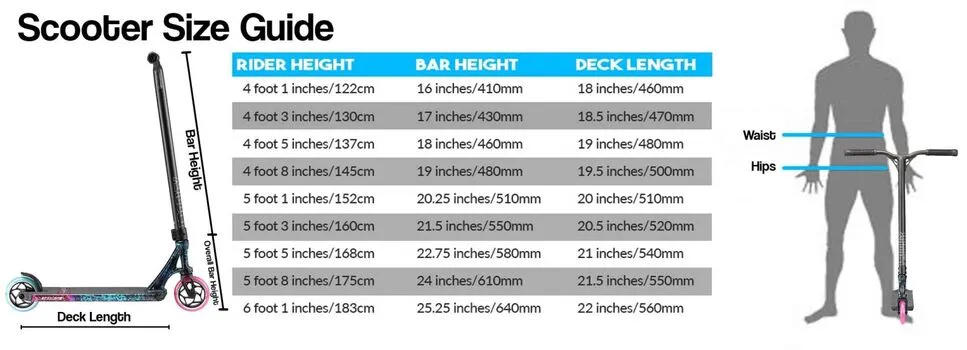
18. Loose Handlebar:
A loose handlebar can arise from improper assembly, a worn-out folding mechanism, or loose stem components.
Related: How High Scooters Handlebar Be?
Troubleshooting:
- Ensure the handlebar is securely attached to the scooter’s stem and locking mechanism.
- Tighten all handlebar components, including the stem and folding mechanism, to eliminate any play or wobbling.
- Inspect the folding mechanism for any wear or damage, and replace it if necessary.
- Test the handlebar stability after adjustments to ensure it’s secure during riding.
- If the handlebar remains loose, consider reaching out to Segway customer support for further assistance or potential repairs.
19. Acceleration Delay:
Acceleration delay may arise from a lag in the motor response, throttle calibration issues, or software glitches.
Troubleshooting:
- Execute a system reset and recalibrate the throttle following the manufacturer’s instructions.
- Ensure the scooter’s software is up-to-date, as updates may resolve acceleration delay issues.
- Inspect for any loose connections related to the throttle or motor controller and secure them properly.
- Experiment with different speed modes to check if the acceleration delay persists. If the issue lingers, consider seeking professional assistance or contacting Segway customer support for further diagnostics.
20. Scooter Not Holding a Charge:
A scooter not holding a charge might be attributed to a faulty battery, charger, or power system.
Troubleshooting:
- Check the charger’s functionality by using it with another compatible device.
- Inspect the battery health and consider replacing it if it fails to hold a charge as expected.
- Ensure the charging port and connections are clean and free from debris that may affect charging.
- If the scooter has a power-saving or standby mode, disable it to observe any impact on the battery’s performance.
- If the issue persists, contact Segway customer support for further assistance or potential repairs.
21. Scooter Vibrating Excessively
Excessive vibrations may result from uneven tire pressure, loose components, or issues with the suspension system.
Troubleshooting:
- Check and adjust the tire pressure to the recommended levels on both wheels.
- Inspect all scooter components, including the handlebars and fenders, for any loose connections and tighten them if needed.
- Ensure the suspension system is functioning correctly and adjust it if necessary.
- Inspect the wheels for any signs of damage or misalignment that could contribute to vibrations.
- If excessive vibrations persist, contact Segway customer support for further assistance or potential repairs.
22. Scooter Overheating
Overheating may occur due to extended periods of riding on steep inclines, using the scooter in hot weather, or a malfunctioning motor.
Troubleshooting:
- Avoid continuous high-speed riding on steep inclines to reduce strain on the motor and prevent overheating.
- Use the scooter in a well-ventilated area and avoid riding in extreme heat conditions.
- Allow the scooter to cool down before reusing it after extended or intensive riding sessions.
- If the scooter consistently overheats, consider contacting Segway customer support for further diagnostics and potential solutions.
- Regularly inspect the motor and its cooling system to ensure proper functionality and prevent overheating issues.
23. Handlebar Shaking While Braking:
If the handlebar shakes while braking, it could be due to misaligned wheels, worn-out brake pads, or improper brake adjustment.
Troubleshooting:
- Inspect the wheels for any misalignment and adjust them as per the manufacturer’s guidelines.
- Check the brake pads for wear and replace them if they are worn out.
- Verify the brake adjustment and ensure it’s set correctly to provide smooth braking.
- Test the scooter after adjustments to check if the handlebar shaking during braking has been resolved.
- If the issue persists, consider contacting Segway customer support for further assistance or potential repairs.
24. Scooter Pulling to One Side:
Scooter pulling to one side may result from uneven tire pressure, misaligned wheels, or an issue with the steering system.
Troubleshooting:
- Check and adjust the tire pressure to the recommended levels on both wheels.
- Inspect the wheels for any misalignment and adjust them as per the manufacturer’s guidelines.
- Ensure the scooter’s steering system is functioning correctly and free from any obstructions.
- Test the scooter on a flat surface after adjustments to see if the pulling issue has been resolved.
- If the scooter continues to pull to one side, consider contacting Segway customer support for further assistance or potential repairs.
Conclusion:
In the event of encountering problems or issues with your Segway Ninebot ZING E10 Electric Scooter, it is strongly recommended to consult the manual, reach out to customer service, or seek assistance from a certified service center whenever feasible. The manual contains essential information regarding the operation, troubleshooting, and maintenance of your scooter.
Customer service and authorized service centers can provide expert guidance to address any technical concerns effectively. Prioritizing safety and adhering to proper maintenance practices ensures a seamless and enjoyable riding experience with your Segway Ninebot ZING E10.

